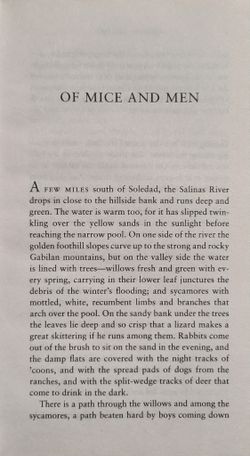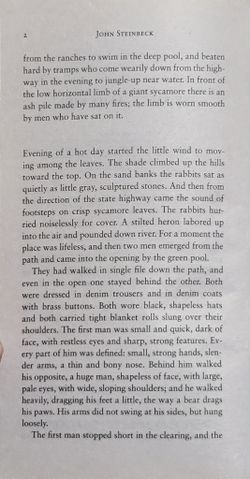Oct 3, 2022
The use of Imagery in the English language.
What is Imagery?
Imagery is vivid descriptive language that appeals to one or more of the senses (sight, hearing, touch, smell, and taste).
The term imagery can also used to refer to figurative language, in particular metaphors and similes.
According to Gerard A. Hauser, we use imagery in speech and writing "not only to beautify but also to create relationships that give new meaning" (Introduction to Rhetorical Theory, 2002).
Why do we use Imagery?
Imagery is used to create the mood we want, and sometimes we use imagery to connect one thing to another, or to make a transition smoother.
It can be used to show intention, or to exaggerate something.
Often times imagery is used just because it sounds good.
Types of Imagery
Auditory imagery describes specific sounds that are happening within the story. For example, “The rooster crowed at early dawn, a sign that it was time to start the day. John woke up, listening to the quiet murmurs of his children in the kitchen below; the clang of pots and pans signaled that breakfast was almost ready.” Can you hear the rooster? Are you imagining the clanging of pots and pans? How does this auditory imagery assist in your overall mental image of the scene? The imagery here describes particular sounds. Readers imagine a man waking up in a quaint room in a log house and a rooster crowing at sunrise over a bright green field.
He snored so loudly, it sounded like there was a steam train coming into the station!
Out of the darkness came a blood curdling half human half animal cry.
The men whistled over the crash of waves reaching the shore, and the horse whinnied along with the work.
Types of Imagery
Visual imagery appeals to the sense of sight and plays the largest role in imagery in literature. It describes what a scene or character looks like. For instance, “The deep blue hues of twilight were reflected in the still water; the slight glint of moonlight peeked through the clouds just enough to make out the silhouette of a passing ship.” The reader can imagine a still ocean scene at twilight as if they were standing on the edge of the water themselves.
As they sat on the soft, sugary sand beach waiting for the sunset, the sinking sun shimmered on the water as the blue sky transformed into various shades of purple and pink.
The moonlight shone over the lake and reflected in her big, dark eyes.
He watched the birds fly back and forth in unison as if they were dancing to some unknown choreography .
Types of Imagery
Tactile imagery appeals to the sense of touch. The feeling of a nice fuzzy blanket on a cold night, the smooth underside of a snake, the rough texture of tree bark. Anything you touch, you can describe through imagery. The description of a bare hand on a mound of snow could be described as, “Sarah placed her bare hand on the cold snow. It was wet at first, then the frigid cold set in like a thousand needles, all pricking her palm at once.”
After she pulled the fuzzy blanket up to her chin, she was warm and cozy.
As Sarah walked along the waterline, jagged bits of shell scraped the undersides of her feet gently.
Liam opened the window, and a gust of cold breeze blew over him, and the snow melted, leaving moist warm touch, making his body shiver.
Types of Imagery
Olfactory imagery describes a particular scent. Let’s say you bite into a warm, steaming plate of maple smoked bacon. How would that smell? An author may describe it as, “The sweet scent of maple wafted through the room, causing Stephanie to stop what she was doing and sniff the air. Authors want you almost to smell the scent coming off the pages. Describing the smell of a particular food can also help readers imagine how that food tastes.
The sickly sweet smell of honeysuckle blossom hung heavy in the air.
I was awakened by the strong smell of a freshly brewed coffee
The hall reeked of wet paint and anti-termite solution; Kiara walked back to her cabin scrunching her nose.
Types of Imagery
Gustatory imagery pertains to the sense of taste. Let’s say a fictional Jason wants to eat a delicious cupcake smothered in chocolate frosting. For example, “Jason took one look at the cupcake in front of him and couldn’t wait for another second — he stuffed it right into his mouth. The rich, sweet, sugary taste of chocolate ran over his taste buds as he chewed and swallowed the whole dessert in less than ten seconds.”
Joe plucked an apple right from the tree and crunched into it, the tart juices filling his mouth and running down his chin.
Randy bought his favorite muffin and stuffed it right into his mouth. The creamy, sweet, sugary taste of chocolate ran over his taste buds as he ate a dozen of them.
The combination of sweet soft carrots and the tangy flavor of vinegar make the vegetable soup richer.
Types of Imagery
Kinesthetic imagery deals with the movement or action of objects or people. An example of kinesthetic imagery could be, “The birds flapped their wings in excitement, the promise of food so close. They sprung out of the tree, one by one, soaring through the branches and swooping down low to the pile of berries beneath the tree.” The description of the way the birds fly down towards the ground helps the reader create an accurate visual image of the scene.
The birds flapped their wings in excitement, the promise of food so close.
When he walked in the room my heart began pounding mercilessly against my chest.
She raked her fingers through her hair in an attempt to smooth out the knots.
Types of Imagery
Organic imagery is the most difficult form of imagery to write. It deals with creating a specific feeling or emotion within the reader. Phrases that make the reader feel sad, fearful, nostalgic, elated, even lost are all extremely effective organic imagery. Have you ever read a book that made you question your entire existence? Some authors have such a way with words that one simple sentence can resonate with you for years.
He leaned toward me with a friendly smile, his cold eyes reflected his true intention, and for a fleeting moment I could see the demon slithering under his skin. "You're mine now", he said in a whispered growl that turned my blood to ice.
Before I could flinch away he grabbed a fistful of hair on back of my head a wave of terror tingled across my body.
How to Create Imagery
Creating sensory imagery comes naturally to some authors and is extremely difficult for others. Take a look at some of your favorite books or poems and see how the author describes scenes or characters. If it’s easy to imagine what they’re describing, that author has mastered imagery. See if you can pick out examples of all seven types of imagery used in literature! The more concrete details you use, the easier it is for readers to create a vivid mental picture of what you wrote about.
How to Create Imagery
A good description should include as many details as possible to give the reader a vivid image of what’s happening. Be descriptive. It’s too easy to skip over these details by relying on cliches and short common phrases to get across the meaning. A cliche is a phrase used so often that it stops being effective in writing and instead just blends into the background of the story.
Literal vs. figurative imagery
Literal imagery describes something as it is. It’s word for word since there are no metaphors or similes used in the description. Figurative imagery, on the other hand, uses metaphors and similes to describe things. Instead of saying that someone is afraid, you could describe them as “the wind whistled past her ears like a low growl.” Obviously, the wind did not literally growl. In both cases, you must be descriptive.
Literal vs. figurative imagery
Literal: She was angry at Bob for what he had done.
Figurative: The thought of Bobs misdeeds made her blood boil.
Types of figurative Speech:
A metaphor is when someone compares something or someone to something else.
Example: She is an early bird.
A simile is the same as a metaphor but the word "as" or "like" is used.
Example: The criminals scattered like cockroaches at the sight of the approaching police lights.
Hyperbole is an obvious exaggeration.
I'm so hungry I can eat a horse.
Alliteration is the repetition of an initial consonant sound in words that are in close proximity.
Coca Cola, Leaping Lizards,
Personification evokes readers to use their imagination and its use can create depth and emotion to a story.
Maybe you’ve heard the phrase, "The wind howled in the night.” Howling is a verb used to describe the vocal projection of an animal or person. However, obviously, since wind is not alive, "howls" is a way to personify it and give the scenario an entirely new dimension and meaning.


By undefined
25 notes ・ 534 views
English
Upper Intermediate